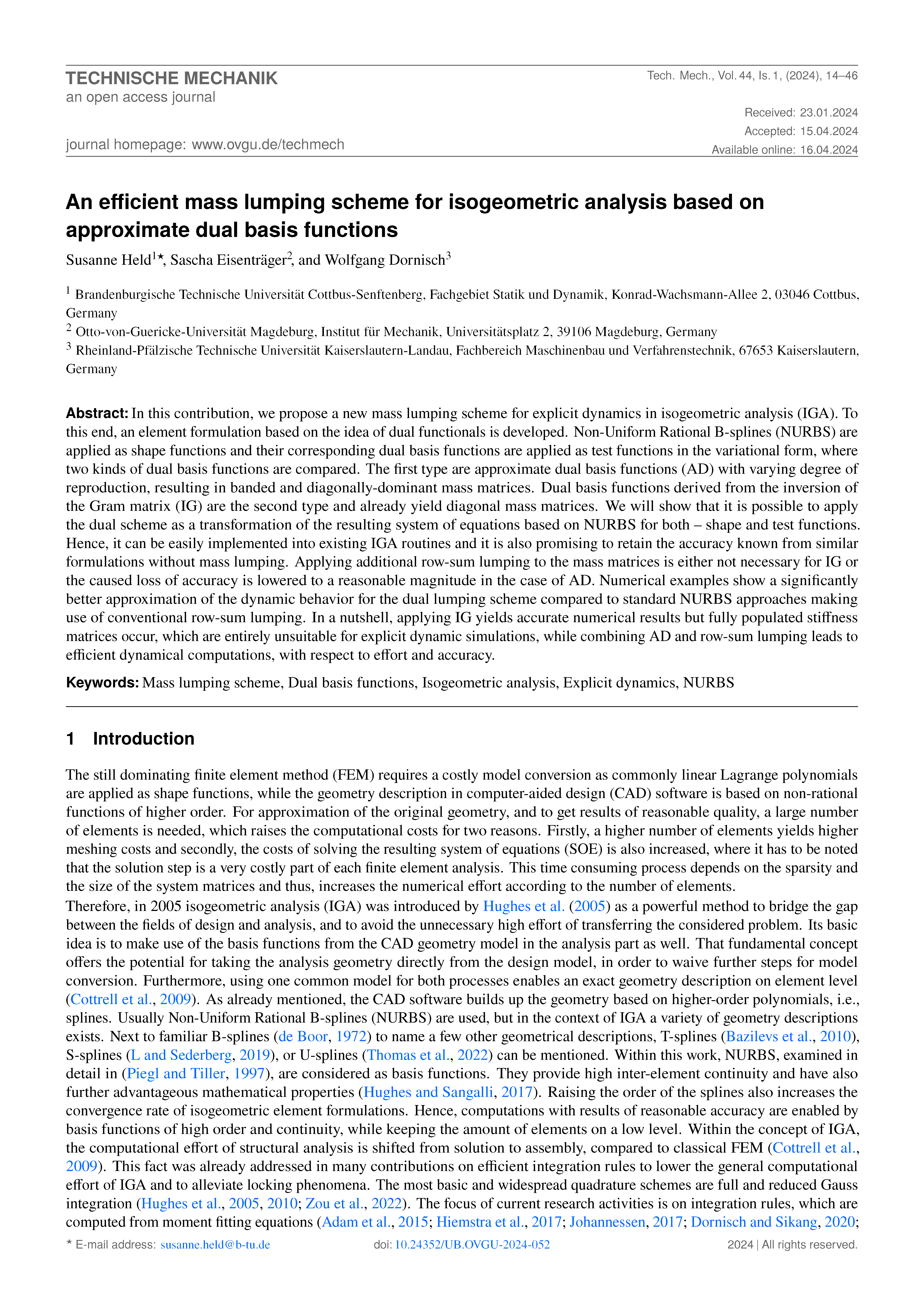An efficient mass lumping scheme for isogeometric analysis based on approximate dual basis functions
DOI:
https://doi.org/10.24352/UB.OVGU-2024-052Keywords:
Mass lumping scheme, Dual basis functions, Isogeometric analysis, Explicit dynamics, NURBSAbstract
In this contribution, we propose a new mass lumping scheme for explicit dynamics in isogeometric analysis (IGA). To this end, an element formulation based on the idea of dual functionals is developed. Non-Uniform Rational B-splines (NURBS) are applied as shape functions and their corresponding dual basis functions are applied as test functions in the variational form, where two kinds of dual basis functions are compared. The first type are approximate dual basis functions (AD) with varying degree of reproduction, resulting in banded and diagonally-dominant mass matrices. Dual basis functions derived from the inversion of the Gram matrix (IG) are the second type and already yield diagonal mass matrices. We will show that it is possible to apply the dual scheme as a transformation of the resulting system of equations based on NURBS for both – shape and test functions. Hence, it can be easily implemented into existing IGA routines and it is also promising to retain the accuracy known from similar formulations without mass lumping. Applying additional row-sum lumping to the mass matrices is either not necessary for IG or the caused loss of accuracy is lowered to a reasonable magnitude in the case of AD. Numerical examples show a significantly better approximation of the dynamic behavior for the dual lumping scheme compared to standard NURBS approaches making use of conventional row-sum lumping. In a nutshell, applying IG yields accurate numerical results but fully populated stiffness matrices occur, which are entirely unsuitable for explicit dynamic simulations, while combining AD and row-sum lumping leads to efficient dynamical computations, with respect to effort and accuracy.

Downloads
Published
How to Cite
Issue
Section
License
Copyright (c) 2024 Susanne Held, Sascha Eisenträger, Wolfgang Dornisch

This work is licensed under a Creative Commons Attribution-ShareAlike 4.0 International License.




